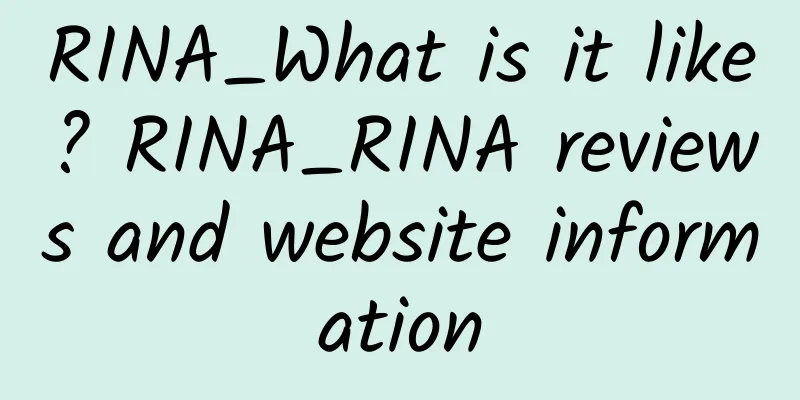What is the Dutch Central Bank like? Dutch Central Bank Reviews and Website Information

|
What is the website of the Dutch Central Bank? The Dutch Central Bank (De Nederlandsche Bank; abbreviated as DNB) is the central bank of the Netherlands, headquartered in Amsterdam, affiliated to the European Central Bank System, and its president is appointed by the Dutch royal family. Website: www.dnb.nl The Dutch Central Bank (De Nederlandsche Bank, DNB) is the central bank of the Netherlands, headquartered in Amsterdam. As part of the European Central Bank system, the Dutch Central Bank plays a vital role in the Dutch financial system. It is not only responsible for maintaining financial stability, but also participates in the formulation and implementation of monetary policy to ensure the sound operation of the Dutch economy. The governor of the Dutch Central Bank is appointed by the Dutch royal family, which shows its authority and importance in the national financial system. The history of the Dutch Central Bank dates back to 1814, when the Kingdom of the Netherlands was founded and the Dutch Central Bank was established. Since then, the Dutch Central Bank has been the backbone of the Dutch financial system. Its main responsibilities include issuing currency, managing foreign exchange reserves, supervising banks and other financial institutions, and maintaining the stability of the payment system. In addition, the Dutch Central Bank is responsible for collecting and publishing economic data to provide decision-making support for governments and businesses. As part of the European Central Bank System, the Dutch Central Bank works closely with the European Central Bank (ECB) and the central banks of other EU member states. This cooperation is mainly reflected in the formulation and implementation of monetary policy. The ECB is responsible for formulating monetary policy in the euro area, while the Dutch Central Bank is responsible for implementing these policies in the Netherlands. This division of labor ensures that monetary policy in the euro area can be implemented in a unified and coordinated manner, thereby maintaining financial stability throughout the euro area. The website of the Dutch Central Bank is www.dnb.nl. Through this website, the public can obtain various information about the Dutch Central Bank, including its history, functions, organizational structure, and the latest financial and economic data. In addition, the website also provides various reports and publications issued by the Dutch Central Bank. These resources are of great reference value for those who study the Dutch economy and financial system. The organizational structure of the Dutch Central Bank includes the President, the Executive Committee, the Supervisory Board and the Management Committee. The President is the highest person in charge of the Dutch Central Bank and is responsible for leading the bank's daily operations and decision-making. The Executive Committee, composed of the President and several other senior managers, is responsible for formulating and implementing the bank's strategies and policies. The Supervisory Board is responsible for overseeing the work of the Executive Committee and ensuring that the bank's operations comply with laws, regulations and ethical standards. The Management Committee is responsible for the daily management and operations of the bank. The main functions of the Dutch Central Bank include the following aspects:
The Dutch Central Bank plays an important role in maintaining financial stability in the Netherlands. For example, during the 2008 global financial crisis, the Dutch Central Bank took a series of measures, including providing liquidity support, strengthening financial supervision, and participating in international financial rescue operations, which effectively stabilized the Dutch financial market and prevented the further spread of the financial crisis. The Dutch Central Bank also actively participates in international financial cooperation, for example, it plays an active role in international financial institutions such as the International Monetary Fund (IMF) and the Financial Stability Board (FSB). Through these collaborations, the Dutch Central Bank not only contributes to maintaining global financial stability, but also enhances the influence of the Netherlands on the international financial stage. The official website of the Dutch Central Bank, www.dnb.nl, is an important information platform. Through this website, the public can obtain various information about the Dutch Central Bank. The content of the website includes the history, functions, organizational structure, and the latest financial and economic data of the Dutch Central Bank. In addition, the website also provides various reports and publications issued by the Dutch Central Bank. These resources are of great reference value for those who study the Dutch economy and financial system. The Governor of the Dutch Central Bank is appointed by the Dutch royal family, which shows its authority and importance in the country's financial system. The Governor is the highest person in charge of the Dutch Central Bank and is responsible for leading the bank's daily operations and decision-making. The Executive Committee, composed of the Governor and several other senior managers, is responsible for formulating and implementing the bank's strategies and policies. The Supervisory Board is responsible for overseeing the work of the Executive Committee and ensuring that the bank's operations comply with laws, regulations and ethical standards. The Management Committee is responsible for the daily management and operation of the bank. The functions of the Dutch Central Bank mainly include monetary policy, financial supervision, payment system, economic data collection and release, and international cooperation. Through these functions, the Dutch Central Bank plays an important role in maintaining financial stability in the Netherlands, promoting economic growth, and participating in international financial cooperation. The history of the Dutch Central Bank dates back to 1814, when the Kingdom of the Netherlands was founded and the Dutch Central Bank was established. Since then, the Dutch Central Bank has been the backbone of the Dutch financial system. Its main responsibilities include issuing currency, managing foreign exchange reserves, supervising banks and other financial institutions, and maintaining the stability of the payment system. In addition, the Dutch Central Bank is responsible for collecting and publishing economic data to provide decision-making support for governments and businesses. As part of the European Central Bank System, the Dutch Central Bank works closely with the European Central Bank (ECB) and the central banks of other EU member states. This cooperation is mainly reflected in the formulation and implementation of monetary policy. The ECB is responsible for formulating monetary policy in the euro area, while the Dutch Central Bank is responsible for implementing these policies in the Netherlands. This division of labor ensures that monetary policy in the euro area can be implemented in a unified and coordinated manner, thereby maintaining financial stability throughout the euro area. The website of the Dutch Central Bank is www.dnb.nl. Through this website, the public can obtain various information about the Dutch Central Bank, including its history, functions, organizational structure, and the latest financial and economic data. In addition, the website also provides various reports and publications issued by the Dutch Central Bank. These resources are of great reference value for those who study the Dutch economy and financial system. The organizational structure of the Dutch Central Bank includes the President, the Executive Committee, the Supervisory Board and the Management Committee. The President is the highest person in charge of the Dutch Central Bank and is responsible for leading the bank's daily operations and decision-making. The Executive Committee, composed of the President and several other senior managers, is responsible for formulating and implementing the bank's strategies and policies. The Supervisory Board is responsible for overseeing the work of the Executive Committee and ensuring that the bank's operations comply with laws, regulations and ethical standards. The Management Committee is responsible for the daily management and operations of the bank. The main functions of the Dutch Central Bank include the following aspects:
The Dutch Central Bank plays an important role in maintaining financial stability in the Netherlands. For example, during the 2008 global financial crisis, the Dutch Central Bank took a series of measures, including providing liquidity support, strengthening financial supervision, and participating in international financial rescue operations, which effectively stabilized the Dutch financial market and prevented the further spread of the financial crisis. The Dutch Central Bank also actively participates in international financial cooperation, for example, it plays an active role in international financial institutions such as the International Monetary Fund (IMF) and the Financial Stability Board (FSB). Through these collaborations, the Dutch Central Bank not only contributes to maintaining global financial stability, but also enhances the influence of the Netherlands on the international financial stage. The official website of the Dutch Central Bank, www.dnb.nl, is an important information platform. Through this website, the public can obtain various information about the Dutch Central Bank. The content of the website includes the history, functions, organizational structure, and the latest financial and economic data of the Dutch Central Bank. In addition, the website also provides various reports and publications issued by the Dutch Central Bank. These resources are of great reference value for those who study the Dutch economy and financial system. The Governor of the Dutch Central Bank is appointed by the Dutch royal family, which shows its authority and importance in the country's financial system. The Governor is the highest person in charge of the Dutch Central Bank and is responsible for leading the bank's daily operations and decision-making. The Executive Committee, composed of the Governor and several other senior managers, is responsible for formulating and implementing the bank's strategies and policies. The Supervisory Board is responsible for overseeing the work of the Executive Committee and ensuring that the bank's operations comply with laws, regulations and ethical standards. The Management Committee is responsible for the daily management and operation of the bank. The functions of the Dutch Central Bank mainly include monetary policy, financial supervision, payment system, economic data collection and release, and international cooperation. Through these functions, the Dutch Central Bank plays an important role in maintaining financial stability in the Netherlands, promoting economic growth, and participating in international financial cooperation. The history of the Dutch Central Bank dates back to 1814, when the Kingdom of the Netherlands was founded and the Dutch Central Bank was established. Since then, the Dutch Central Bank has been the backbone of the Dutch financial system. Its main responsibilities include issuing currency, managing foreign exchange reserves, supervising banks and other financial institutions, and maintaining the stability of the payment system. In addition, the Dutch Central Bank is responsible for collecting and publishing economic data to provide decision-making support for governments and businesses. As part of the European Central Bank System, the Dutch Central Bank works closely with the European Central Bank (ECB) and the central banks of other EU member states. This cooperation is mainly reflected in the formulation and implementation of monetary policy. The ECB is responsible for formulating monetary policy in the euro area, while the Dutch Central Bank is responsible for implementing these policies in the Netherlands. This division of labor ensures that monetary policy in the euro area can be implemented in a unified and coordinated manner, thereby maintaining financial stability throughout the euro area. The website of the Dutch Central Bank is www.dnb.nl. Through this website, the public can obtain various information about the Dutch Central Bank, including its history, functions, organizational structure, and the latest financial and economic data. In addition, the website also provides various reports and publications issued by the Dutch Central Bank. These resources are of great reference value for those who study the Dutch economy and financial system. The organizational structure of the Dutch Central Bank includes the President, the Executive Committee, the Supervisory Board and the Management Committee. The President is the highest person in charge of the Dutch Central Bank and is responsible for leading the bank's daily operations and decision-making. The Executive Committee, composed of the President and several other senior managers, is responsible for formulating and implementing the bank's strategies and policies. The Supervisory Board is responsible for overseeing the work of the Executive Committee and ensuring that the bank's operations comply with laws, regulations and ethical standards. The Management Committee is responsible for the daily management and operations of the bank. The main functions of the Dutch Central Bank include the following aspects:
The Dutch Central Bank plays an important role in maintaining financial stability in the Netherlands. For example, during the 2008 global financial crisis, the Dutch Central Bank took a series of measures, including providing liquidity support, strengthening financial supervision, and participating in international financial rescue operations, which effectively stabilized the Dutch financial market and prevented the further spread of the financial crisis. The Dutch Central Bank also actively participates in international financial cooperation, for example, it plays an active role in international financial institutions such as the International Monetary Fund (IMF) and the Financial Stability Board (FSB). Through these collaborations, the Dutch Central Bank not only contributes to maintaining global financial stability, but also enhances the influence of the Netherlands on the international financial stage. The official website of the Dutch Central Bank, www.dnb.nl, is an important information platform. Through this website, the public can obtain various information about the Dutch Central Bank. The content of the website includes the history, functions, organizational structure, and the latest financial and economic data of the Dutch Central Bank. In addition, the website also provides various reports and publications issued by the Dutch Central Bank. These resources are of great reference value for those who study the Dutch economy and financial system. The Governor of the Dutch Central Bank is appointed by the Dutch royal family, which shows its authority and importance in the country's financial system. The Governor is the highest person in charge of the Dutch Central Bank and is responsible for leading the bank's daily operations and decision-making. The Executive Committee, composed of the Governor and several other senior managers, is responsible for formulating and implementing the bank's strategies and policies. The Supervisory Board is responsible for overseeing the work of the Executive Committee and ensuring that the bank's operations comply with laws, regulations and ethical standards. The Management Committee is responsible for the daily management and operation of the bank. The functions of the Dutch Central Bank mainly include monetary policy, financial supervision, payment system, economic data collection and release, and international cooperation. Through these functions, the Dutch Central Bank plays an important role in maintaining financial stability in the Netherlands, promoting economic growth, and participating in international financial cooperation. |
Recommend
How to eat dried figs
Fig is a very rare fruit, and I don’t know much a...
Nutritional value of trout Benefits of eating trout
This is also called waterfall fish or seven-color...
Medicinal value and nutritional content of red snake fruit
How much do you know about Red Snake Fruit? Let m...
What is Norddeutsche Landesbank like? Norddeutsche Landesbank reviews and website information
What is the website of Norddeutsche Landesbank? No...
Nutritional value and eating methods of red root spinach
Red root spinach is also called parrot vegetable ...
How is Youdian.com? Youdian.com reviews and website information
What is a website called Youdian? Youdian, you can...
What is Bordeaux Football Club like? Bordeaux Football Club reviews and website information
What is the website of Bordeaux Football Club? Bor...
How to prevent tomato fruit rot in autumn
Autumn is generally the season for tomato fruit r...
How to take calcium tablets? Precautions and taboos for taking calcium tablets
Calcium is an important nutrient that promotes th...
How is The Australian? Reviews and website information of The Australian
What is The Australian? The Australian is an influ...
What is the Amur State University like? Amur State University reviews and website information
What is the website of Amur State University? Amur...
What is the International Rowing Federation? International Rowing Federation reviews and website information
What is the website of the International Rowing Fe...
The efficacy and function of dwarf cherry
Have you ever seen the dwarf cherry plant? Do you...
Dried persimmon
Dried persimmon is a traditional Chinese medicine...
How to pickle chives without turning yellow
Chives are part of the vegetable leek. As a dish ...









